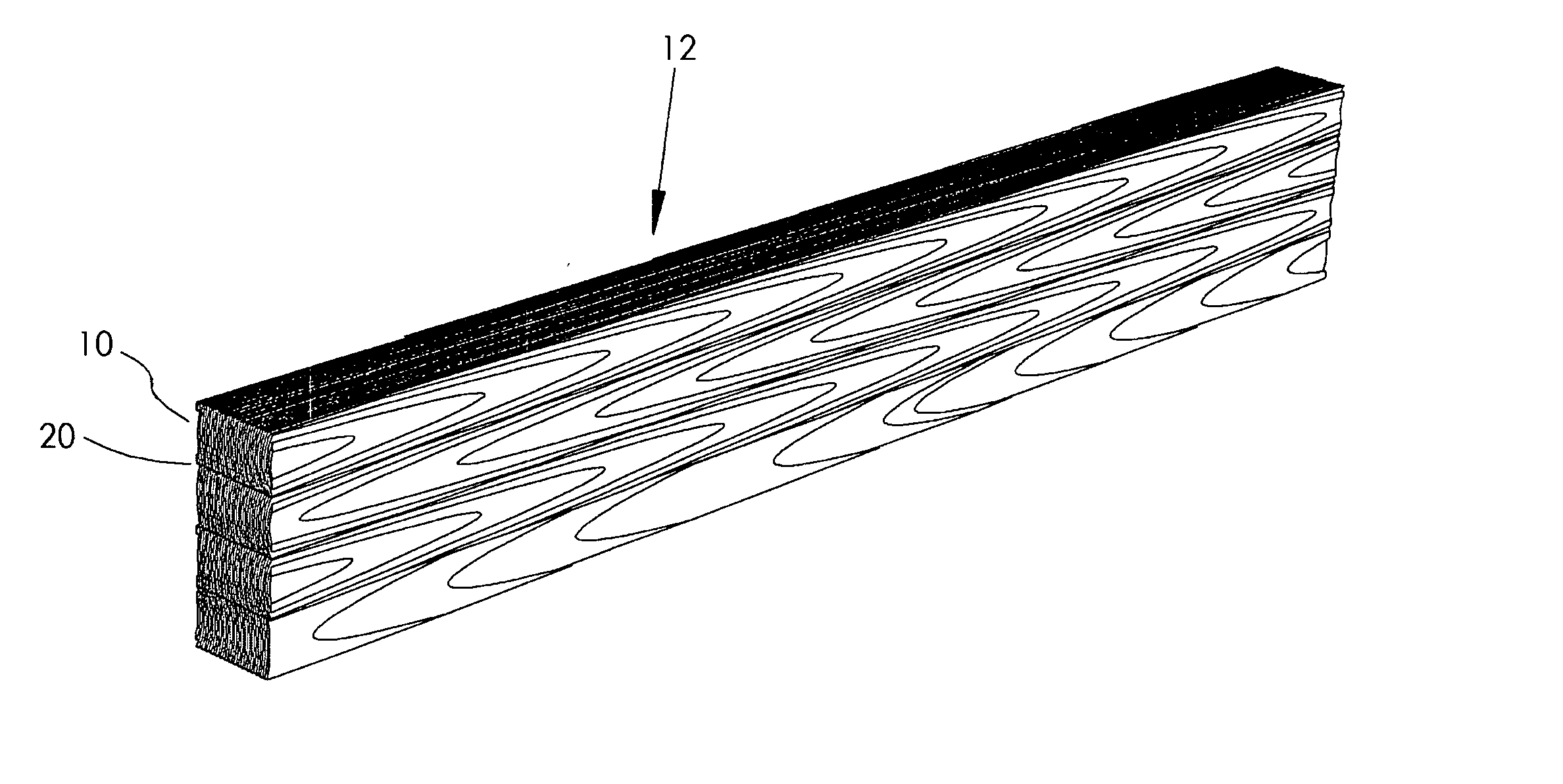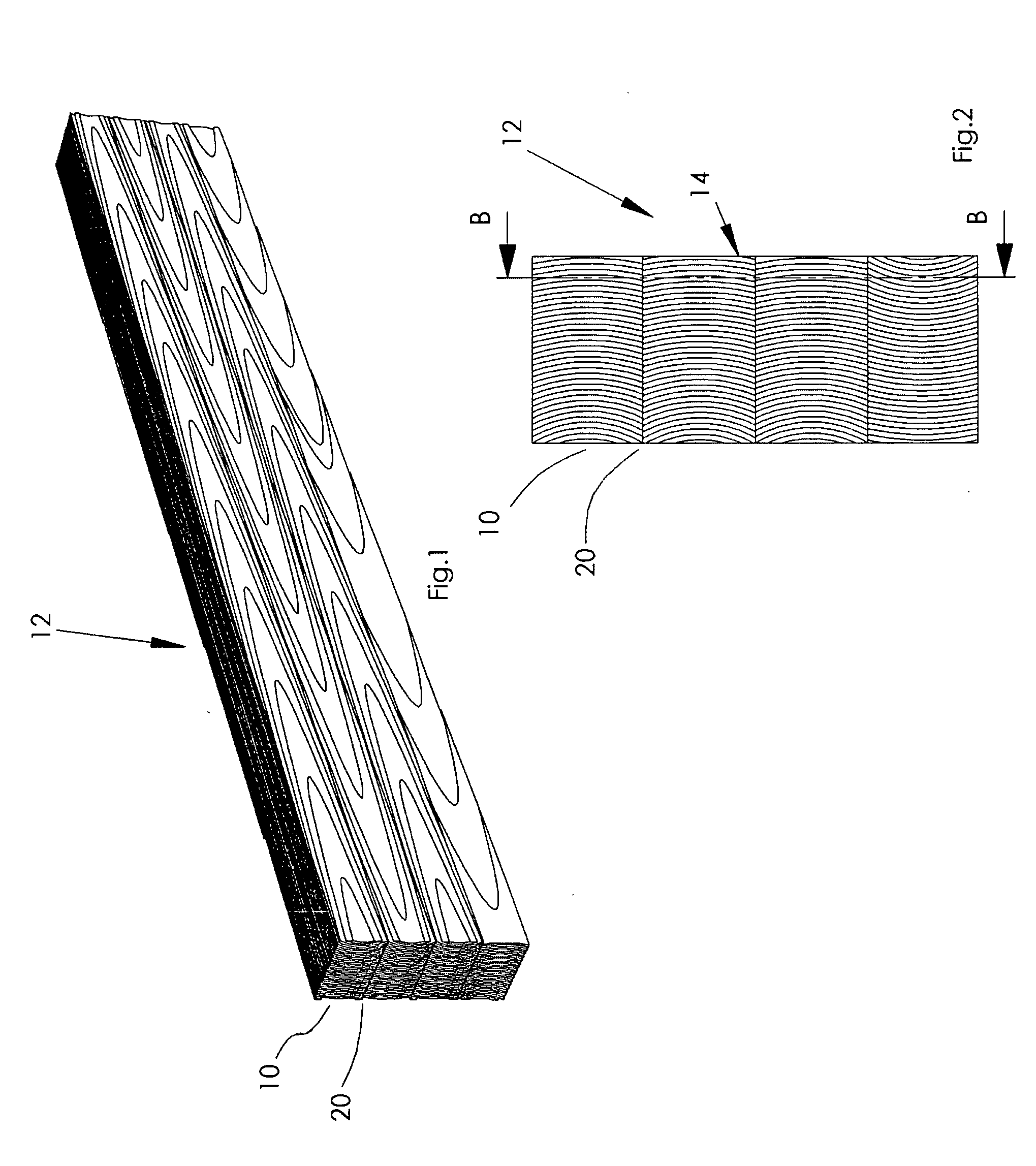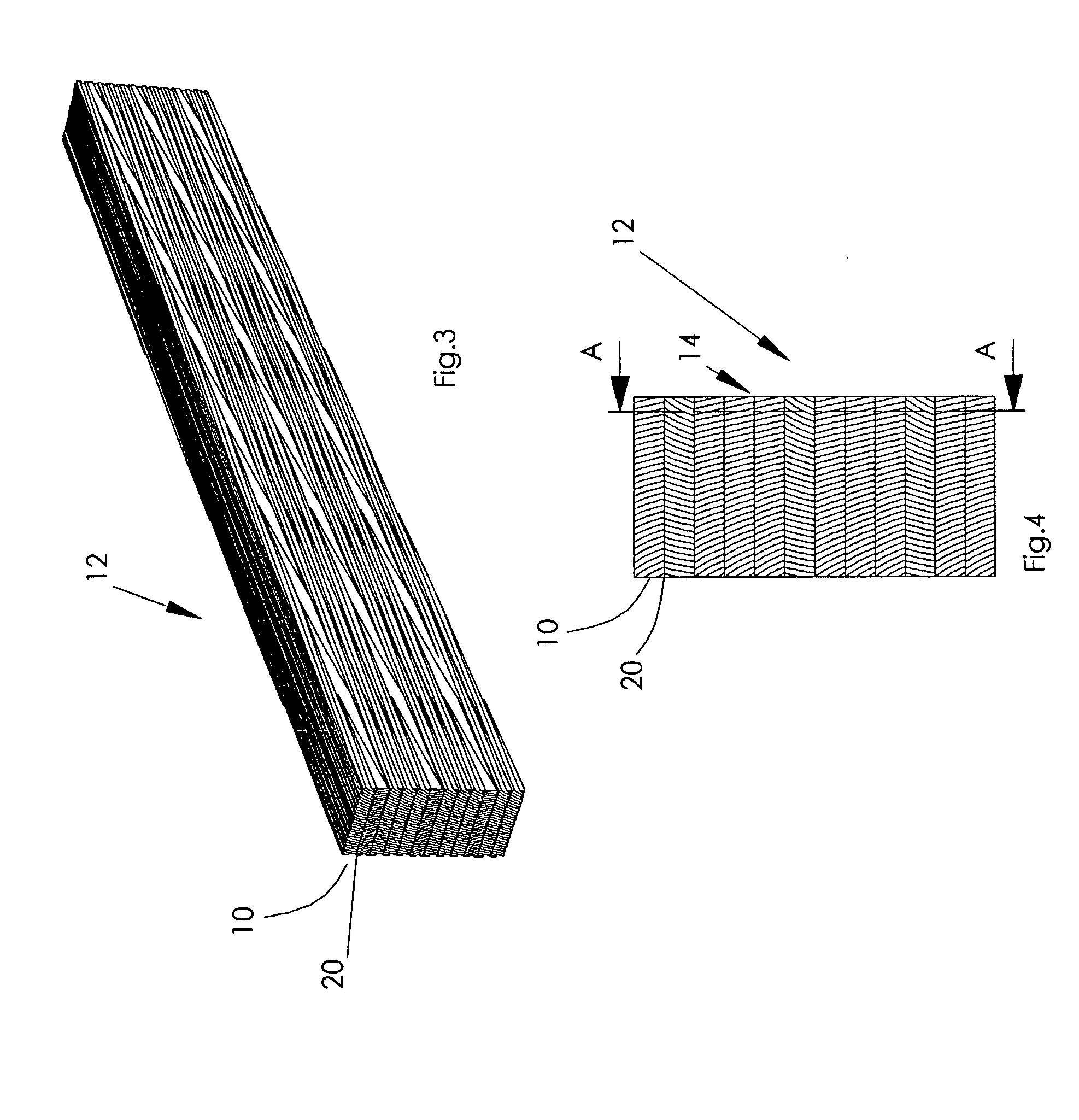Process for the manufacture of a veneer
a manufacturing process and technology for veneers, applied in the field of veneer manufacturing process, can solve the problems of inability to further process, inability to manufacture tools, inconvenient, etc., and achieve the effect of enlarge the application range of wood veneers
- Summary
- Abstract
- Description
- Claims
- Application Information
AI Technical Summary
Benefits of technology
Problems solved by technology
Method used
Image
Examples
embodiment
5. Embodiment
[0169] A fifth embodiment of the invention is described with reference to FIGS. 11 and 12. In said embodiment, pieces of wood for the manufacture of veneer were obtained, wherein a section II as shown in FIG. 11 was separated from the center of a log 50, whereby, in the present embodiment, said log 50 was cleaved into three sections I, II, III. Several pieces of wood which were formed by the section II could be advantageously processed, as, for example, already described in embodiment 1.
[0170] Moreover, also the border sections I, III of the log 50 could advantageously be used for the manufacture of veneers. For this purpose, the border sections I, III, as shown in FIG. 12, were glued to each other at their respective plane side, and were subsequently cut essentially parallel to the plane being defined by the adhesion layer. Here, the course of the process principally corresponded to the process as described above in the first embodiment, except that it is essentially ...
PUM
| Property | Measurement | Unit |
|---|---|---|
| temperature | aaaaa | aaaaa |
| temperature | aaaaa | aaaaa |
| humidity content | aaaaa | aaaaa |
Abstract
Description
Claims
Application Information
 Login to View More
Login to View More - R&D
- Intellectual Property
- Life Sciences
- Materials
- Tech Scout
- Unparalleled Data Quality
- Higher Quality Content
- 60% Fewer Hallucinations
Browse by: Latest US Patents, China's latest patents, Technical Efficacy Thesaurus, Application Domain, Technology Topic, Popular Technical Reports.
© 2025 PatSnap. All rights reserved.Legal|Privacy policy|Modern Slavery Act Transparency Statement|Sitemap|About US| Contact US: help@patsnap.com



